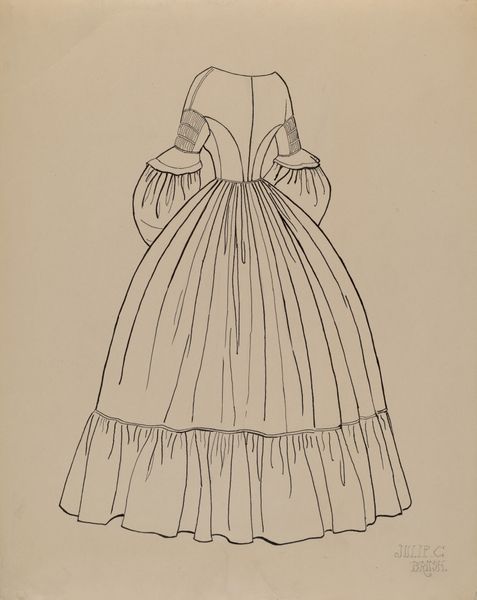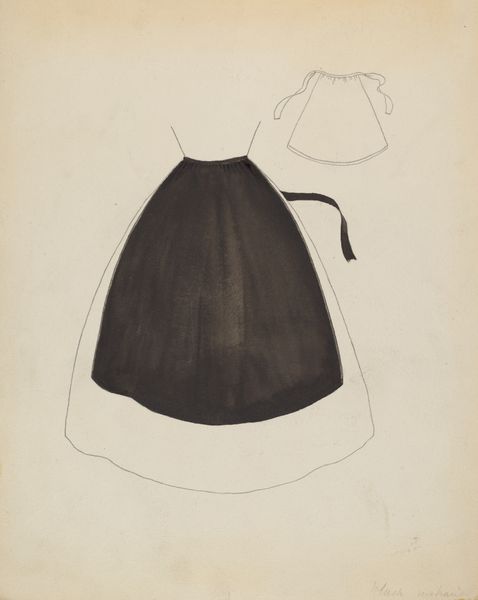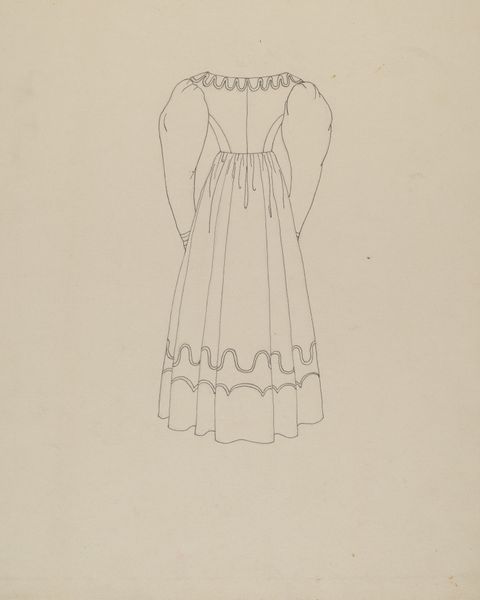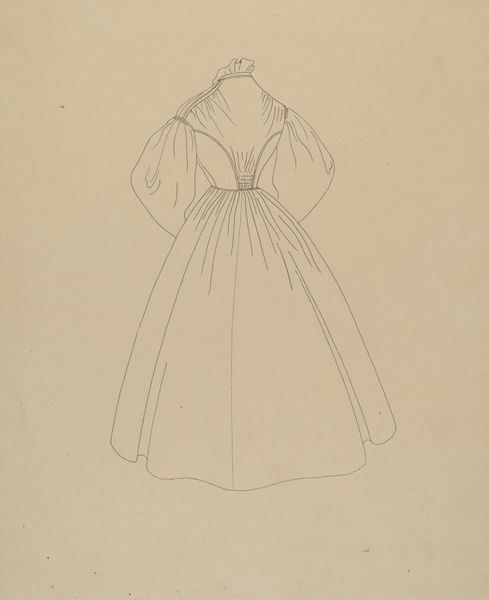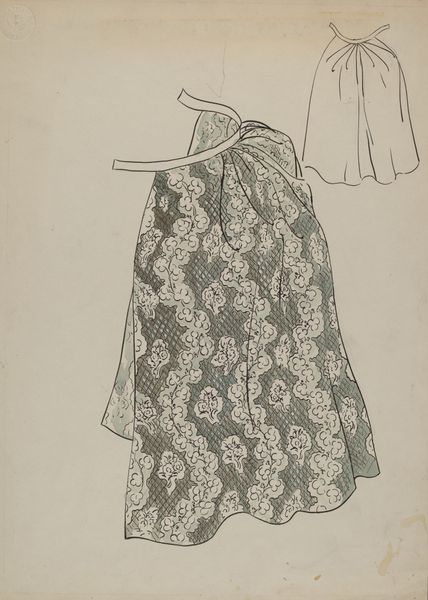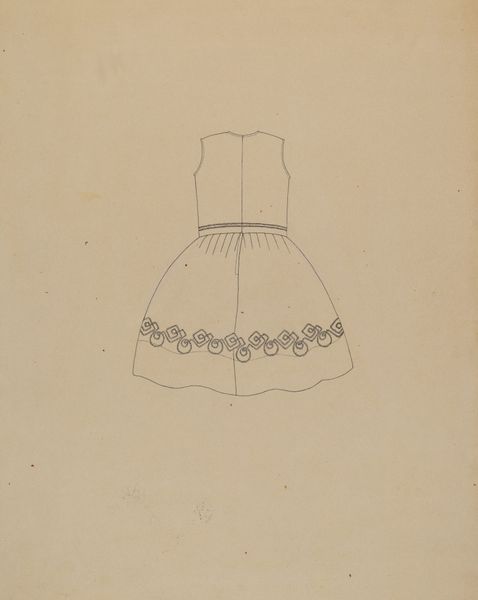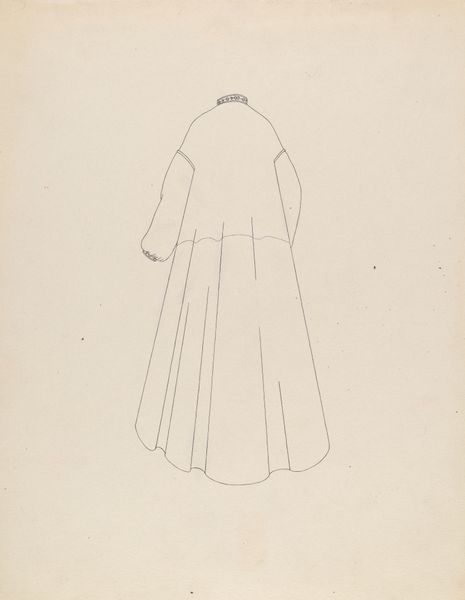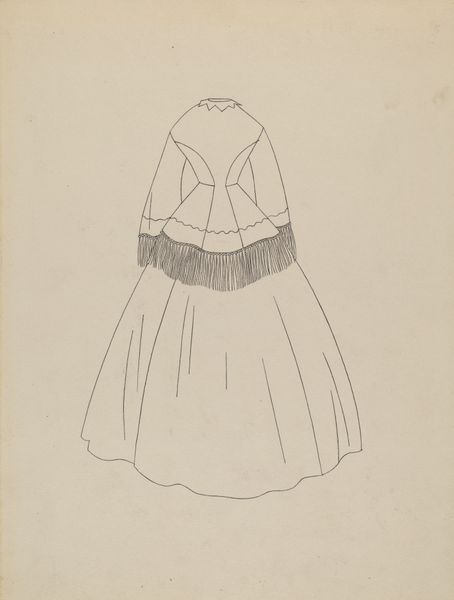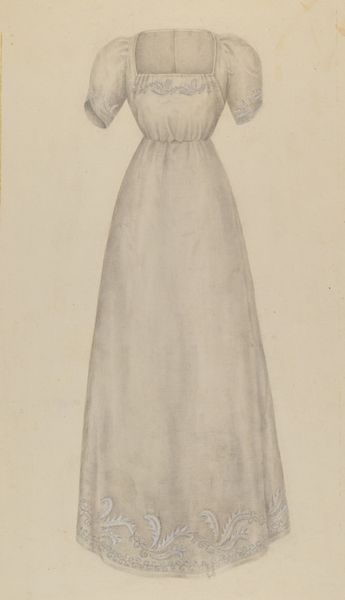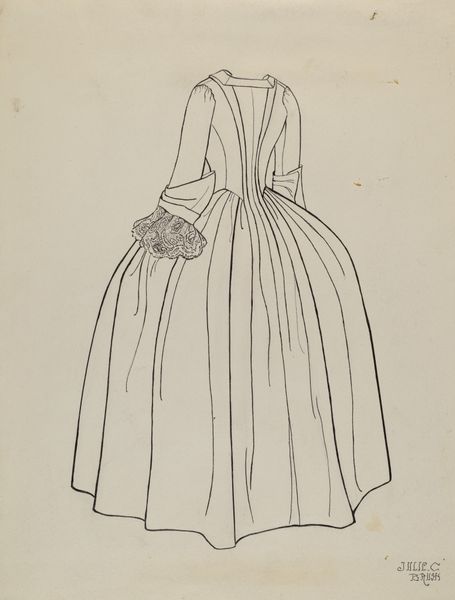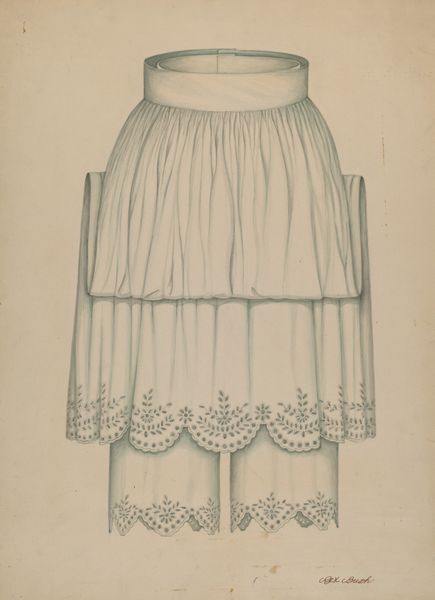
drawing
#
fashion design
#
drawing
#
fashion mockup
#
fashion and textile design
#
fashion based
#
historical fashion
#
wearable design
#
geometric
#
clothing photo
#
fashion sketch
#
high fashion
#
clothing design
Dimensions: overall: 33.8 x 28 cm (13 5/16 x 11 in.)
Copyright: National Gallery of Art: CC0 1.0
Editor: This is Julia C. Brush’s "Study for Quilted Petticoat," created sometime between 1935 and 1942. It’s a pretty straightforward drawing of a skirt – makes me think about historical fashion, something almost costume-like. What grabs you when you look at this? Curator: Well, the deceptive simplicity, for one. It’s a drawing, but really a document, pointing us towards a network of making. This isn't "high art" in the traditional sense; it's closer to a pattern, a tool. Think of the labor involved: the quilter's hands, the materials themselves, the social context of clothing production during that time. Editor: So you see it as less about aesthetics and more about…process? The work itself seems almost like a set of instructions for something bigger than just a drawing. Curator: Precisely. The visual appearance is almost secondary to the physical act it represents. This connects directly to material culture – how are these petticoats actually being used and consumed? How did they circulate? Was the drawing maybe even aspirational to certain demographics or social classes during that era? Editor: It’s fascinating to think about fashion as a form of material culture and the economic systems propping up a single article of clothing! Curator: Consider the material value placed on clothing in different historical periods. What does it tell us about gender roles, economic status, and the very fabric of society itself? Each stitch, each fold, tells a story of production and consumption. Editor: I guess I'd been overlooking the whole scope of the labor behind what might feel like a fairly standard garment. This makes you think twice about every element—the materials used and even where and by whom it might have been worn, manufactured and bought. Curator: Exactly, by looking through a material lens it forces us to think about value, production, labor and so many cultural meanings and how deeply they resonate in art.
Comments
No comments
Be the first to comment and join the conversation on the ultimate creative platform.
